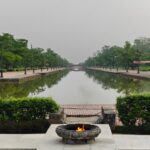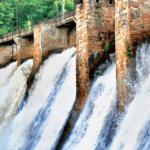The government unveiled a budget for NPR 819.46 billion for the FY 2015/016 on 15 July 2015. The budget enlists key programs especially Rebuilding, Agriculture and Infrastructure and prioritizes Relief, Rehabilitation and Reconstruction.
The Reconstruction Authority
FY 2015/16 has been earmarked the ‘reconstruction year’ as the annual budget makes provisions to recover from the recurrent earthquakes that have been hitting the nation since April 25, 2015. The budget incorporates setting up of a Reconstruction Authority to undertake reconstruction works through the “National Reconstruction Fund”, which currently has NPR 74 billion – a small portion of the PDNA identified NPR 667 billion requirement, as well as other funds namely “Economic Rehabilitation Fund” and “Heritage Fund”. As the appointment of a CEO and other key personals is yet to take place, this body is expected to be functional only in the coming fiscal year. An additional NPR 17 billion has also been provisioned for various ministries and agencies to carry out reconstruction activities.
Reinforced Agriculture
A significant determinant in Nepalese economy, the agriculture sector witnessed a flurry of developmental programs, incentives and subsidies in the Budget for FY 2015/16. Covering approximately 8% of the total budget, the programs attempt to cover to all 75 districts; though substantial effort has gone into developing the Terai-Madhesh region with hopes of introducing large irrigation programs and creating agricultural processing centers and industrial estates within the next 5 years. Aiming to increase agricultural product and productivity, and decrease cost of production, the budget has provisioned to build necessary infrastructure, subsidize machinery, procure sufficient fertilizers, and conduct relevant research with emphasis on agricultural products that have a higher competitive advantage and value, along with the practice of collective farming. These strategies have been adopted in light of controlling the sharp rise in imports of agricultural products as well as to potentially boost exports in case of excess production.
Infrastructure
Through the National Reconstruction Fund, the infrastructure sector is expected to receive a boost of NPR 74 billion, NPR 50 billion of which will be spent on housing, NPR 3 billion for public buildings, NPR 2 billion for archeological structures, NPR 7 billion for other physical infrastructures and the rest for production and social sectors. Another major announcement is the formation of an Infrastructure Development Bank in collaboration with interested and capable private sector parties, in order to increase investment in the infrastructure sector. The budget also has investment provisions to build 1942 kilometers of new roadways, with an aim of providing road access to and between industries and industrial centers.
Similarly, efforts are also in place towards developing the Terai-Madhesh region and expanding the regions’ connection to the capital, including building roads, constructing transmission lines, and urbanizing major cities. In addition to these, necessary budget has also been allocated to linking the Far/Mid-Western development regions and certain sections of the hilly regions to the capital through new projects as well as the continuation of previous projects. In the energy sector, major hydropower projects have been given continuity with the hopes of completion of the Upper Tamakoshi and Melamchi Projects to bring drinking water supply to the Kathmandu valley within 2 years. New potential hydropower projects have also been identified.
Uncertain Future
Given past shortcomings, it will be interesting to see the extent to which the government utilize its current budget; which is approximately 33% more than the previous one. While the budget attempts to facilitate changes which may arise from the constitution drafting process and the subsequent creation of federal states, uncertainty surrounding local elections adds to the qualms regarding the efficient implementation of reconstruction and development works; particularly in rural areas. Finally, while grand commitments have been made particularly in reconstruction work post-earthquake, it is crucial that these projects are undertaken in a timely manner stronger structures and not in haste with deadline fast approaching, as has been the case.
Click here for Part 2 of this article





